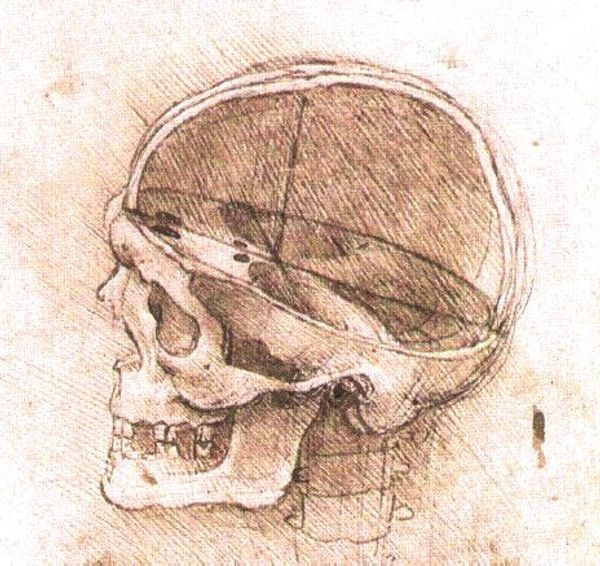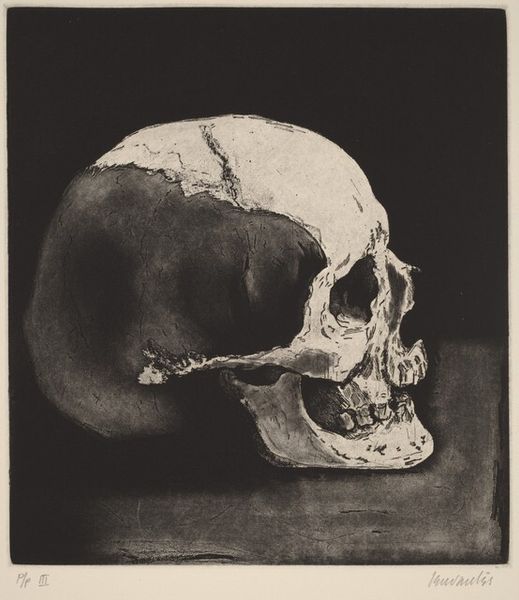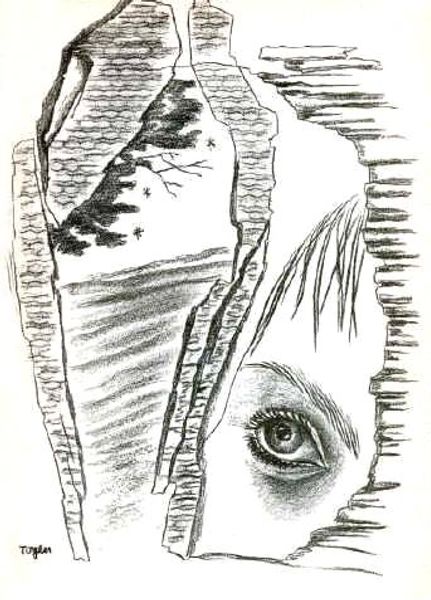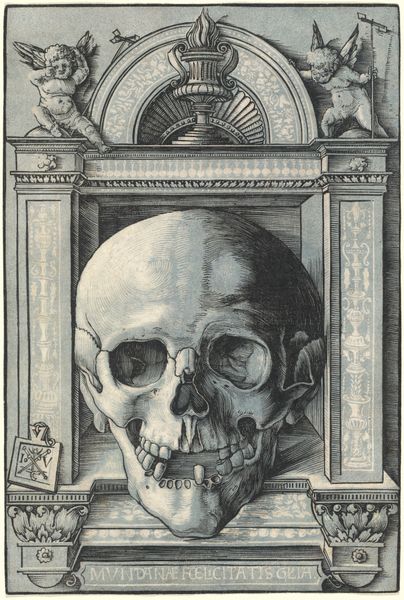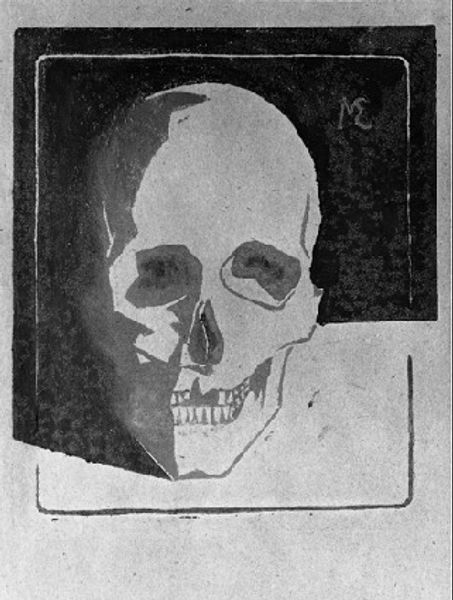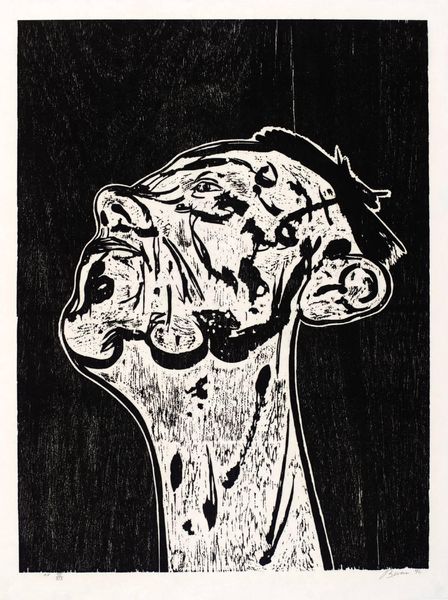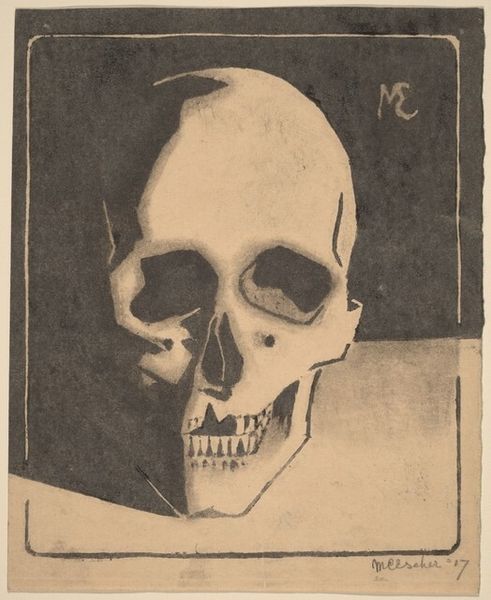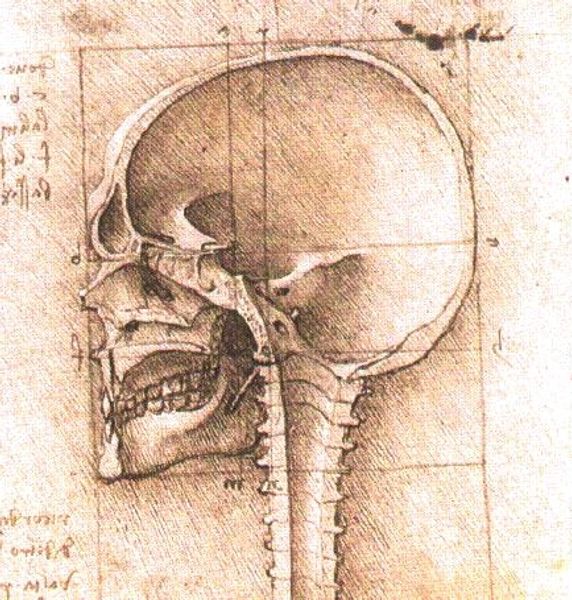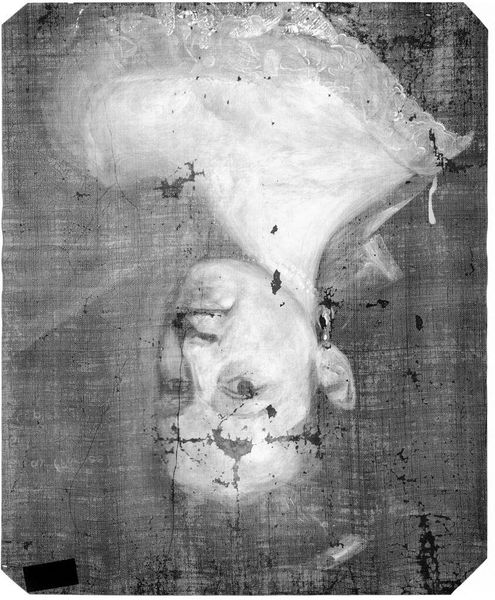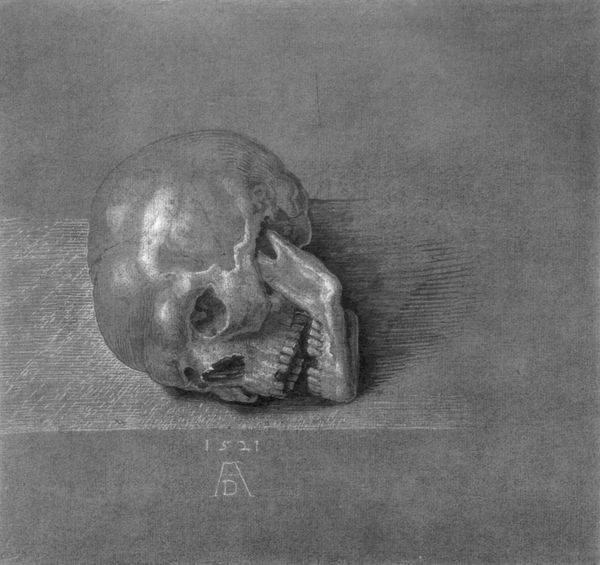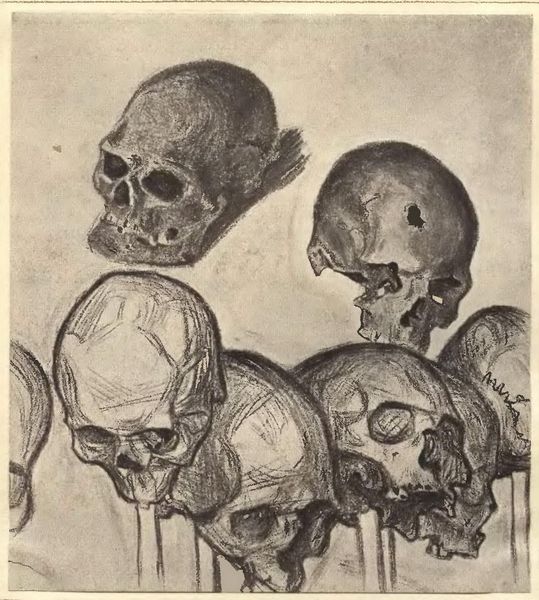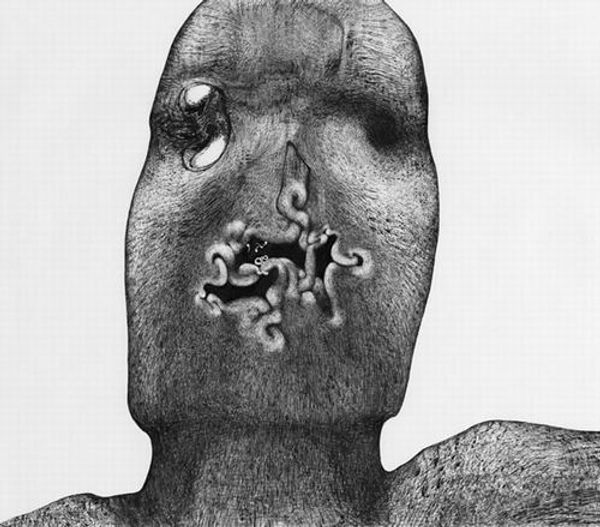
graphic-art, print, woodcut, engraving
#
graphic-art
# print
#
pen illustration
#
figuration
#
form
#
ink line art
#
sketch
#
woodcut
#
line
#
engraving
Copyright: Public domain US
Editor: So, this is M.C. Escher’s "Skull," a woodcut from 1919. The stark contrast immediately grabs you. What strikes me is the way the skull emerges from the solid black background, feeling both ancient and strangely modern. How do you interpret this work? Curator: It's interesting you pick up on the contrast. Given that 1919 was a pivotal year, fresh off the devastation of World War I and during the Spanish Flu pandemic, a skull takes on an even heavier significance. How do you think Escher uses this image in the context of that time? Editor: Well, a skull usually symbolizes mortality, but here, the clean lines and graphic nature almost give it a sense of... defiance, maybe? Curator: Defiance is a powerful word. Perhaps it's about confronting mortality head-on, rather than succumbing to despair. The woodcut medium itself, with its graphic quality, almost reduces life and death to a binary. Does this binary create meaning when thinking of political events or perhaps challenge identity? Editor: That makes sense. It's not just about personal death but the widespread loss of life, presented in a way that’s both stark and, dare I say, aesthetically striking. Curator: Exactly. And consider Escher's later explorations with perspective and impossible spaces. Could this "Skull" be seen as an early attempt to grapple with the structures, both physical and societal, that contain us? Editor: Wow, I hadn't thought of it that way. It moves beyond a simple memento mori to a critique of existence itself. Thanks for opening my eyes to that. Curator: And thank you for framing its initial impact so eloquently! It's in those initial gut reactions that we often find the most profound truths.
Comments
No comments
Be the first to comment and join the conversation on the ultimate creative platform.
